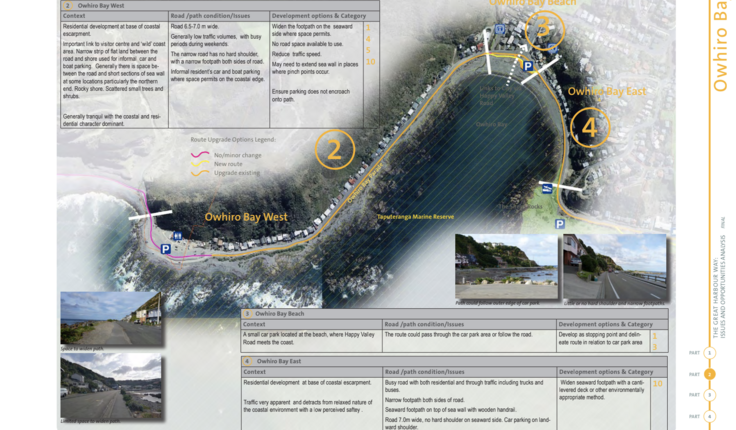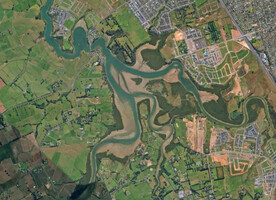News
Celebrating a working milestone
Posted 07 04 2022
in News

Boyden Evans was an early pioneer in landscape and visual assessments, and is nationally recognised for his work in the sustainable energy sector, particularly wind farms.
An NZILA fellow, he’s recently marked 35 years at Boffa Miskell where he’s based in their Wellington office.
LAA: Why did you become a landscape architect - what appealed to you about the profession?
BE: I completed a BSc in botany and pedology at Victoria University of Wellington in 1972 and during my last year I became interested in the Landscape Architecture programme at Lincoln University. I was fortunate to be introduced to Robin Gay, a graduate of the first cohort from the Lincoln University programme, who worked as a landscape architect for the Department of Lands and Survey.
From my understanding of the programme at Lincoln and my meeting with Robin the post graduate Dip. LA programme seemed an ideal way for me to apply my botany and pedology degree; I started in the post graduate Diploma in Landscape Architecture in 1975.
LAA: Where was your first job in LA?
BE: I joined the Department of Lands and Survey in Wellington after finishing at Lincoln at the end of 1976 where I worked on projects in national parks and reserves and also those associated with the Departments’ extensive farm holdings.
After 18 months I took leave to travel overseas for 18 months of which I worked as a landscape architect for 6 months at a multidisciplinary landscape planning and ecology practice in Germany.
Returning to Lands and Survey at the end of 1979 I continued with the type of projects I had worked on previously before being seconded to the fledgling QEII National Trust and remained there for nearly six and half years.
LAA: You're described as one of the early pioneers in landscape and visual assessments - how did that come about?
BE: I’ve always had a keen interest trying to understand the landscape and its origins; my thesis at Lincoln focused on formulating an assessment methodology for river environments. I was able to pursue this interest initially in Lands and Survey where I was involved helping to develop assessment criteria for Wild and Scenic Rivers. There were further opportunities to work on landscape assessment and protection when I joined the QEII National Trust.
On joining Boffa Miskell in 1986 it enabled me to work on both landscape assessment at a range of scales for development projects and also regional and district-wide assessments together with helping to develop landscape provisions for district plans and regional policy statements.
Landscape architects with an interest and aptitude for landscape assessment have been an important part of Boffa Miskell’s operation and the company makes significant investment in training and upskilling and also in new technologies. Boffa Miskell has helped develop and refine assessment methodologies, including utilising new tools and techniques, such as use of GIS, computer-generated visual simulations, and drone photography; these developments have provided new challenges and opportunities for practitioners, and I’ve found it very rewarding being involved in these developments.
LAA: What is interesting for you in that special field?
BE: Working at a broadscale, the importance of always considering landscape context, and needing to craft a clear rationale and argument to explain and justify assessment outcomes.

LAA: You've just celebrated 35 years at Boffa Miskell. How has your work changed or developed in that time?
BE: Key changes:
- Greater and earlier involvement of landscape architects in large scale development projects as result of planning legislation, and greater awareness and the improved environmental outcomes that can be achieved by involving landscape architects;
- The availability of and access to recent aerial photography and also LiDAR contour data of virtually anywhere in New Zealand;
- Widespread use of a range of technology tools such as UAVs, GIS, digital photography, etc in everyday work at a range of scales.
When I joined the company, Boffa Miskell was exclusively a landscape practice and today it is a multi-disciplinary company employing several different disciplines, which has opened new project opportunities.
LAA: Why have you stayed so long?
BE: Boffa Miskell started as a landscape architecture practice but the evolution into a consultancy embracing several complementary disciplines has created a very diverse professional environment, which has been rewarding to be part of.
Boffa Miskell celebrates 50 years in 2022 and having been involved in the shaping and developing the company over the last 35 years has provided many challenges and opportunities. Working alongside colleagues from other disciplines, many repeat clients, and the range of projects have been professionally stimulating and enjoyable.
While I’ve had a long- term interest and involvement in landscape assessment, I’ve had been involved in a wide range of landscape work from master planning, landscape design, revegetation, developing management plans and environmental strategies for many clients in various parts of New Zealand. It’s been the diversity of work that’s provided the ongoing stimulus and challenges.
LAA: You're described as a mentor for landscape planners - why is it so important that the profession has strong leadership in this area?
BE: In Boffa Miskell, the cohort of landscape planners has always been a very collegial and tight knit group with a lot of sharing ideas and approaches. Identifying potential recruits to join the team and nurturing and supporting them is a key to the way the group operates.
Boffa Miskell was an early leader in landscape planning and assessment in New Zealand and those of us who joined the company were inspired by the company’s involvement and widespread achievements. This legacy has ensured landscape planning and assessment continues to be a core part of the company’s services
Strong leadership in landscape planning and assessment is essential to ensure landscape matters play a key role in land use and development outcomes, especially with the significant changes to the planning legislation.
LAA: What do you see as the biggest challenge facing the profession?
BE: I see two challenges facing the profession over the short to medium terms; first, ensuring that the landscape profession remains relevant and retains a significant role with the advent of the new planning legislation; and second, that a steady stream of landscape graduates continue to be inspired to focus on landscape planning and assessment and seek opportunities to work in this area of the profession.
Share
31 Jul
Call for Registration Interview Panelists

The Institute calls for Registered members to join the 2025 Registration Interview Panel. We invite experienced members of the Institute …
31 Jul
NZILA President's update

Kia ora, I’m Ralph. I live in Wellington. I’m the new Chair & President of Tuia Pito Ora.
I’m proud to be working alongside Simon Button (Deputy Chair) and the other board members Nada, Rangitahi, Peter and James …
30 Jul
Submission on the proposed changes to RMA National Direction

From Peter Kensington, Chair Environmental Legislation Committee
Thank you to those members that contributed suggestions for the Tuia Pito Ora NZILA submission on Packages 1 to 3 …
Events calendar
Full 2025 calendar